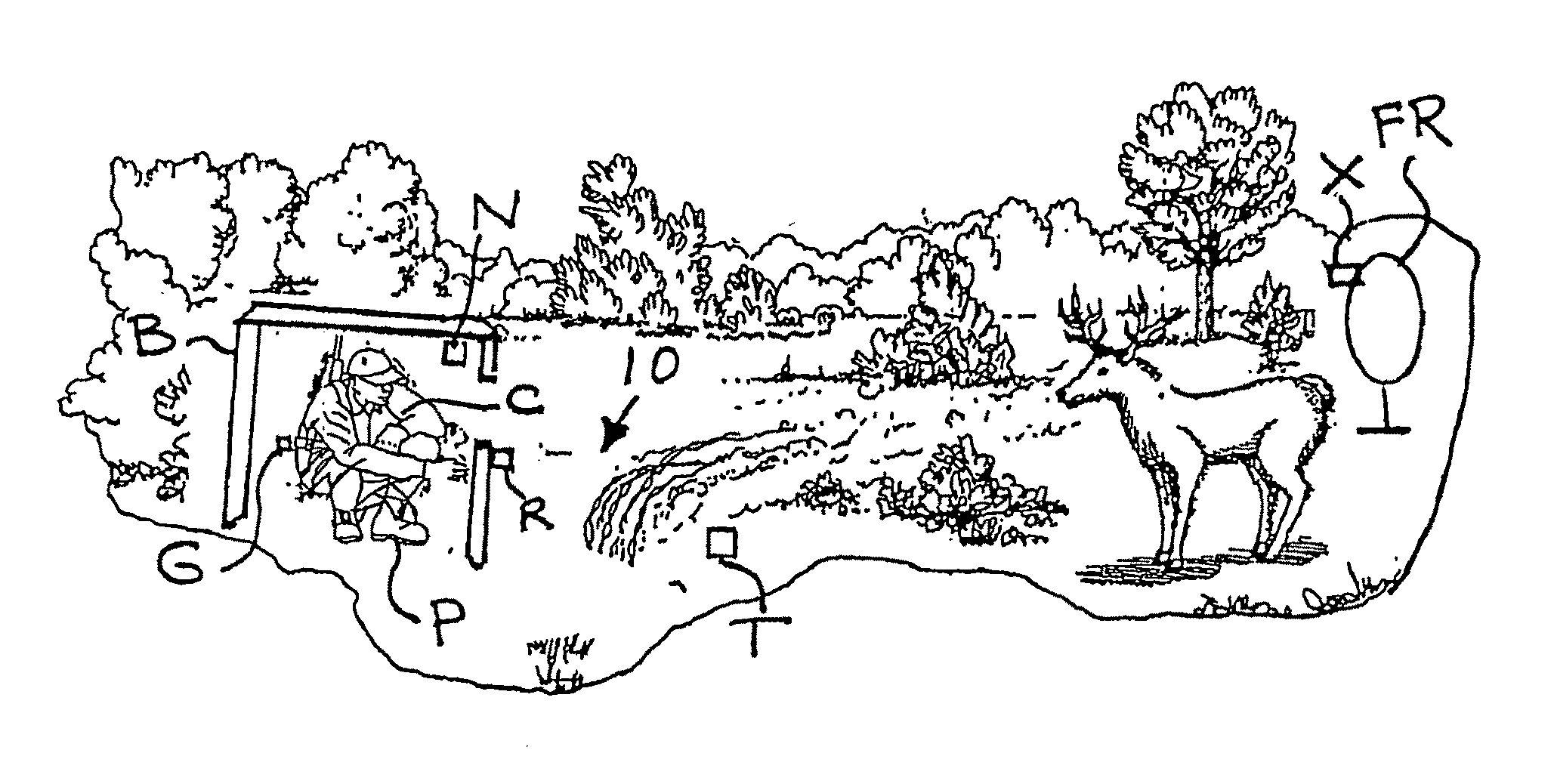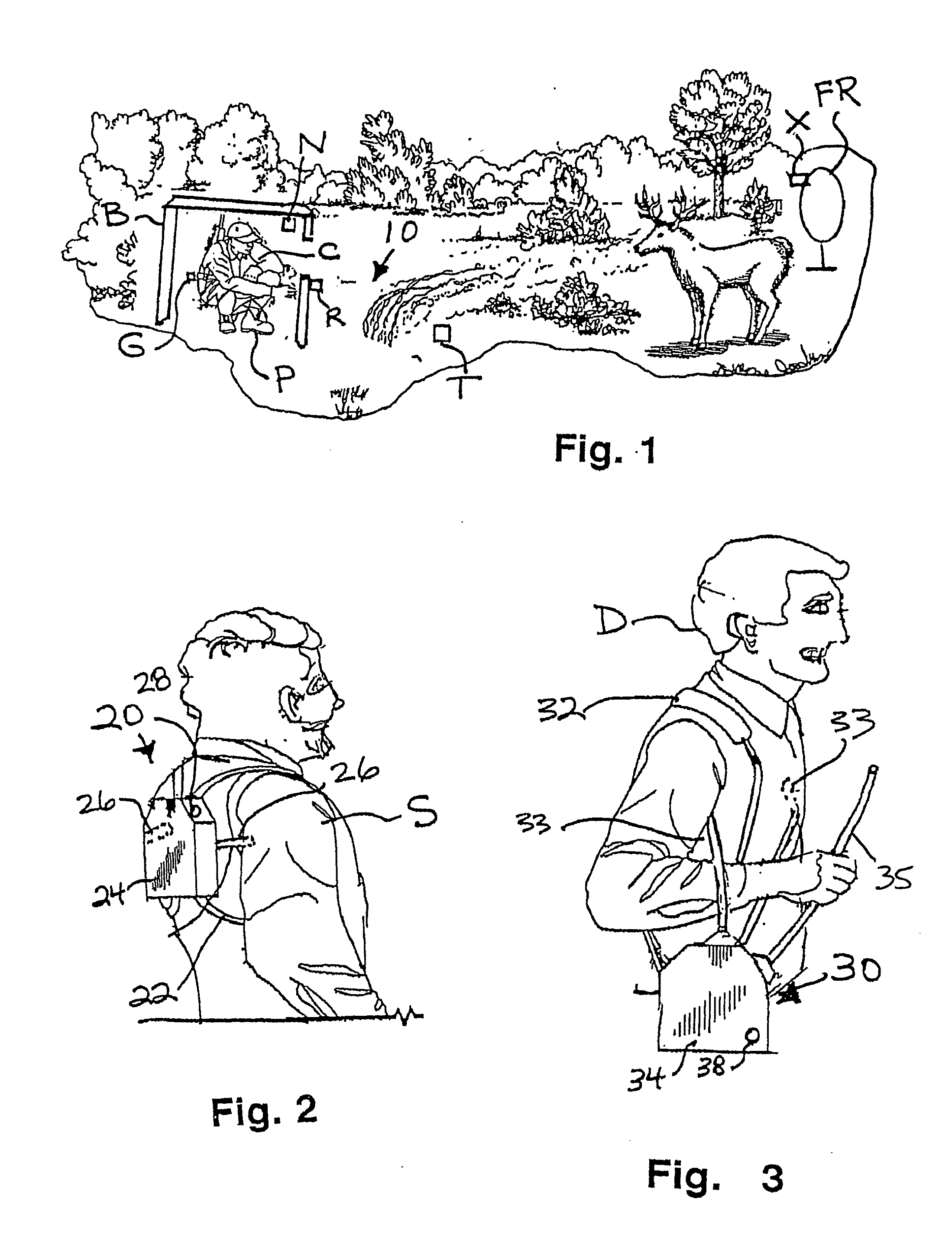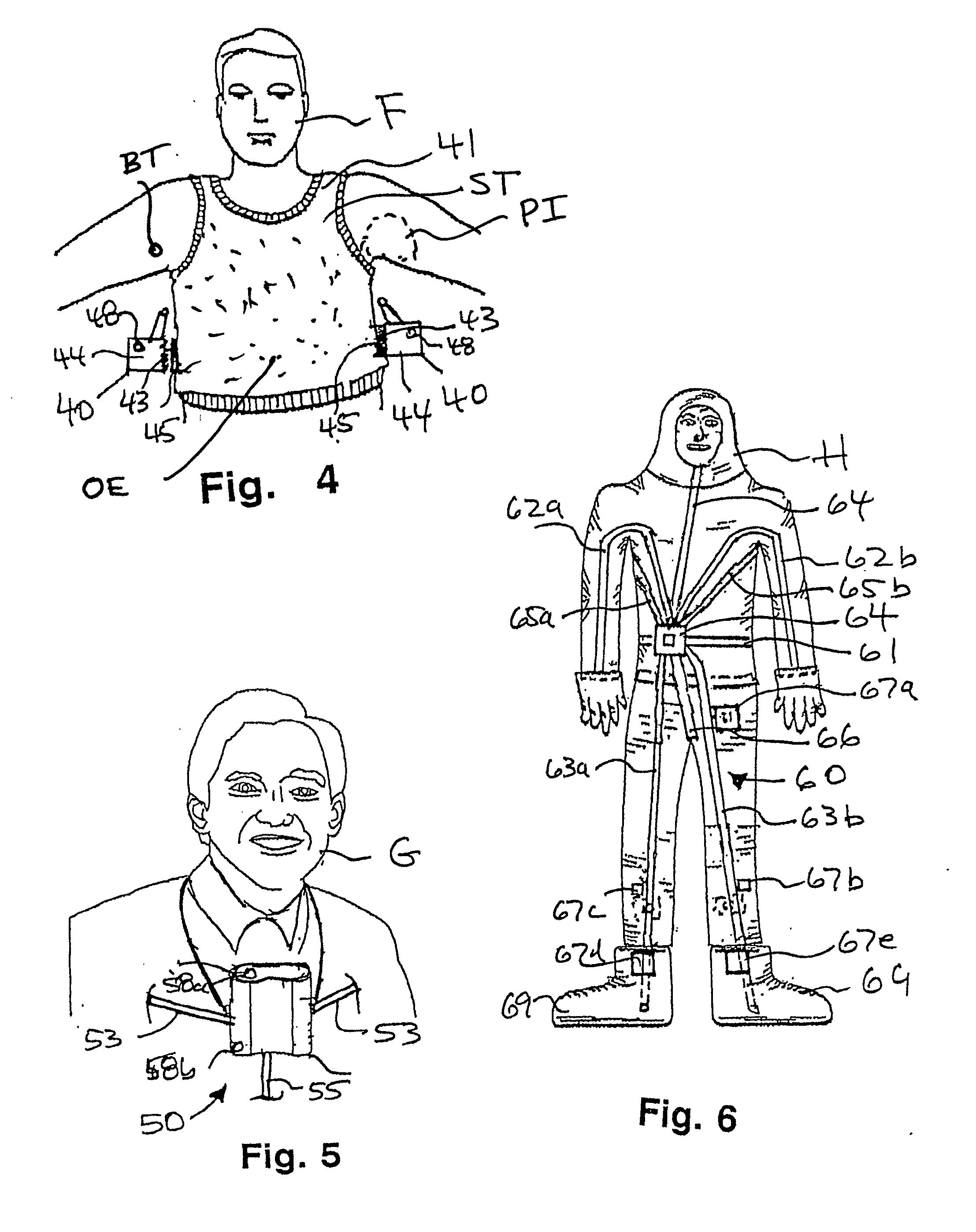Systems and methods for detecting descented material
a technology of deodorizing material and detection method, which is applied in the field of systems and methods for detecting deodorizing material, can solve the problems of no effective way to eliminate or reduce odors from humans and clothing and equipment, irritate skin, and deer being spooked and running from unnatural scents, etc., and achieve the effect of reducing foreign scent, reducing or eliminating odor or scen
- Summary
- Abstract
- Description
- Claims
- Application Information
AI Technical Summary
Benefits of technology
Problems solved by technology
Method used
Image
Examples
examples
[0153]For any example it would be within the scope of the present invention to use an ozone etc. generator.
[0154]Example I shows how ozone reduces underarm odor from humans.
[0155]Examples II-X show how ozone reduces odors associated with human antiperspirants and perfumes.
[0156]Examples XI-XII show how ozone can eliminate odors in a tent or blind.
[0157]Examples XIII-XXVII show how ozone can eliminate odors from cloth, rags, and clothes placed in a container (e.g. garment bag, luggage, or cooler) and treated with ozone.
[0158]Example XXVII shows how ozone treatment results in an improved hunting experience.
example i
[0159]Ozone from a DC PRO 450 HO (Trademark) generator was directed to the underarm of a human for a period of 30 seconds. The odor before treating with ozone was a 10 on a personal odor scale (“POS”) scale in which bad odor is at worst a “10” and reduced odor is less than 10, and after treatment the odor was a less than 1 on the POS scale.
example ii
[0160]Stick deodorant, Right Guard EXTREME (Trademark) deodorant, was wiped onto the back of a human hand. The odor from the deodorant before treating with ozone was a 10. After 5 minutes treatment with ozone using the DC PRO 450 HO ozonator within 12 inches of the hand, the smell was very faint (<1 on the POS scale).
PUM
| Property | Measurement | Unit |
|---|---|---|
| temperatures | aaaaa | aaaaa |
| temperatures | aaaaa | aaaaa |
| radius | aaaaa | aaaaa |
Abstract
Description
Claims
Application Information
 Login to View More
Login to View More - R&D
- Intellectual Property
- Life Sciences
- Materials
- Tech Scout
- Unparalleled Data Quality
- Higher Quality Content
- 60% Fewer Hallucinations
Browse by: Latest US Patents, China's latest patents, Technical Efficacy Thesaurus, Application Domain, Technology Topic, Popular Technical Reports.
© 2025 PatSnap. All rights reserved.Legal|Privacy policy|Modern Slavery Act Transparency Statement|Sitemap|About US| Contact US: help@patsnap.com



